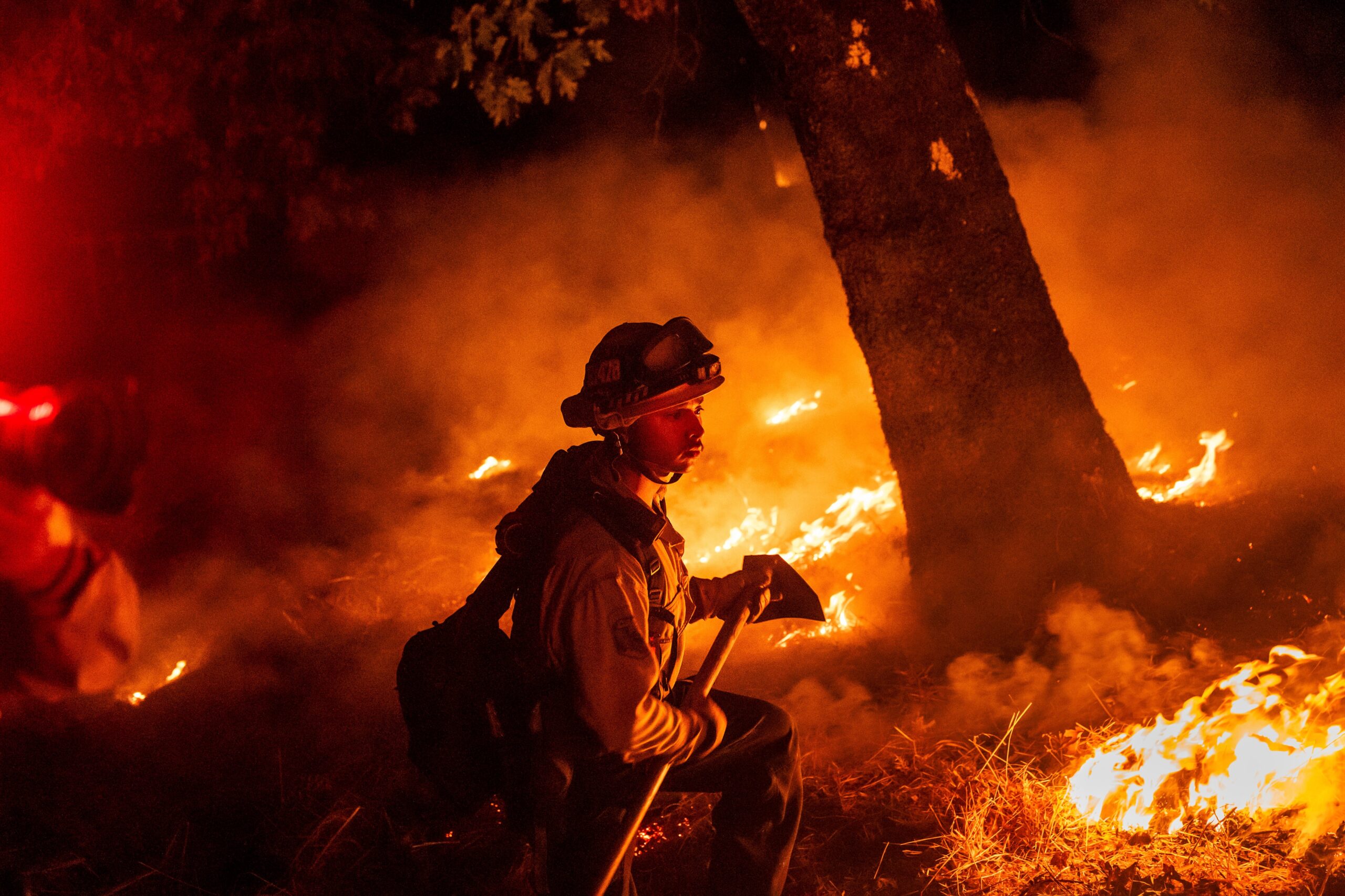In the midst of hot, dry weather on Sunday, firefighters attempted to suppress wildfires that had grown overnight in Central Oregon and California wine country, forcing hundreds of people to evacuate.
As of early Sunday, the California Department of Forestry & Fire Protection reported that the Pickett Fire in Napa County was 11% contained and had spread to over 10 square miles (26 square kilometers).
Suggested Videos
According to Jason Clay, spokesman for the Calfire Sonoma Lake-Napa Unit, the fire endangered about 500 houses near Aetna Springs and Pope Valley, forcing around 190 people to evacuate their homes and another 360 to be under evacuation warnings.
The fire, which started Thursday following a week of very hot weather, was being fought by more than 1,230 firemen supported by ten aircraft. Investigations are ongoing to determine the cause of the fire.
With temperatures predicted to reach dangerous levels throughout the weekend in Washington, Oregon, Southern California, Nevada, and Arizona, residents of the Western United States have been suffering from a heat wave that has sent several individuals to the hospital.
Since the fire started, Clay added, the weather has cooled, and Sunday’s high is predicted to reach 94 degrees (34 Celsius). Later Sunday afternoon, however, rising winds were predicted to cause humidity levels to decline.
“Since we’ve seen the fire activity pick up over the last three days, that’s been a driving factor in the afternoons,” Clay said, adding that assistance from all over California has been essential to our efforts.
The fire started in the same region as the much larger Glass Fire in 2020, which spread into Sonoma County and ultimately destroyed over 1,500 buildings and 105 square miles (272 square kilometers).
According to Clay, the latest fire is mostly being fueled by dry vegetation on steep slopes, some of which are dead and downed trees that were left over from the Glass Fire and some of which are grass and brush that came back before drying up again. That fire was started by wind.
According to the state Fire Marshal’s Office, the Flat Fire in Deschutes and Jefferson counties in Oregon had spread to over 34 square miles (88 square kilometers), and roughly 4,000 residences were under various forms of evacuation notice, including 1,000 that were told to evacuate right away.
In several residential neighborhoods, firefighters were able to break containment lines and kept putting out fires. However, officials noted that Sunday’s challenging terrain, low humidity, and triple-digit temperatures in some places presented serious difficulties.
Officials stated they were trying to verify the condition of the structures after several homes caught fire.
According to Jason Carr, spokesman for the Deschutes County sheriff’s office, the region is in a high desert climate where juniper trees and dried grasses are burning and fire is rushing into canyon sections where it’s difficult to draw containment lines.
The fire started on Thursday night and spread swiftly in the hot, windy weather. In a Facebook video, state Fire Marshals spokesman Chris Schimmer said firefighters were monitoring isolated thunderstorms in Southern Oregon that might move north on Sunday.
Carr added that downdrafts can push fire in numerous ways and that “if we get thunderstorms that roll through, it can… cause the fire to jump (containment) lines.”
Scientists say that human-caused warming from burning fossil fuels like coal and gas is causing more intense heat waves and droughts, which in turn set the stage for more destructive wildfires, even though it’s hard to directly link a single fire or weather event to climate change.
___
Several private foundations provide funding for the Associated Press’s coverage of the environment and climate. All content is the exclusive responsibility of AP. Visit AP.org to find funded coverage areas, a list of supporters, and AP rules for dealing with philanthropies.








